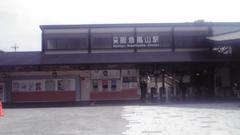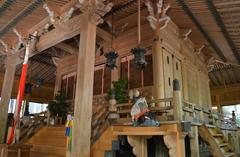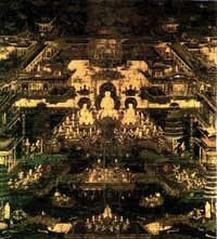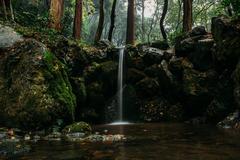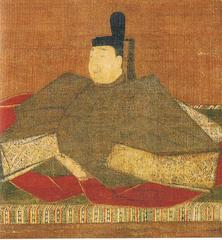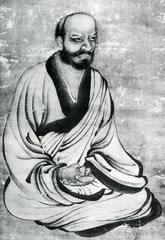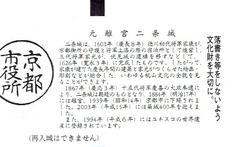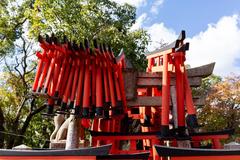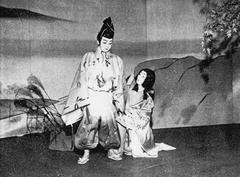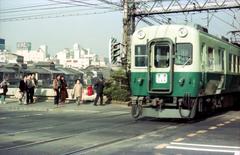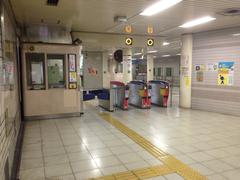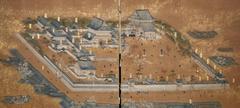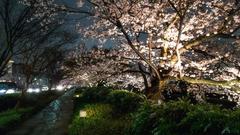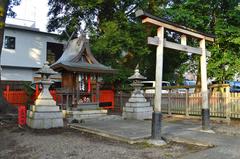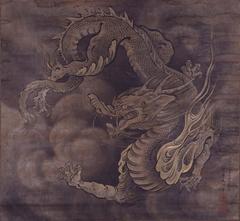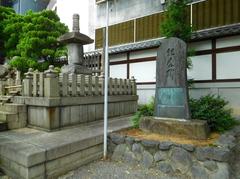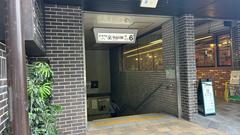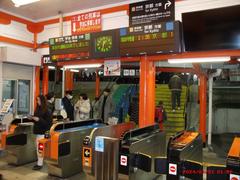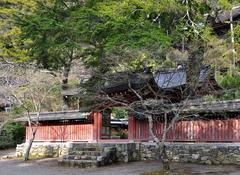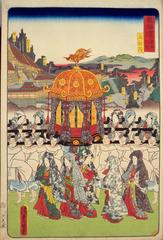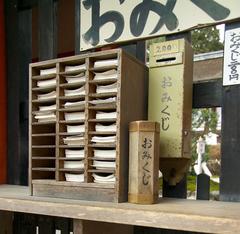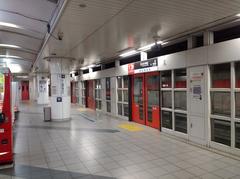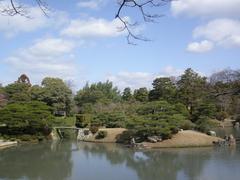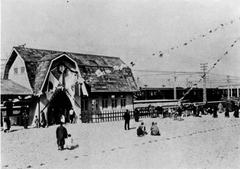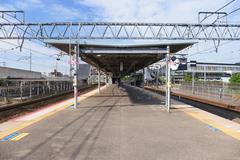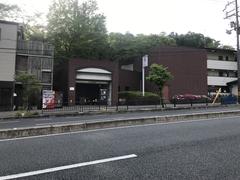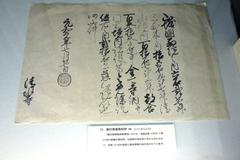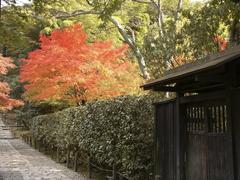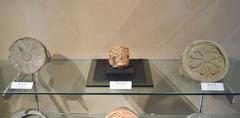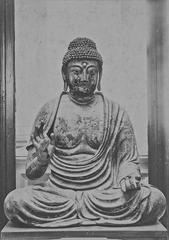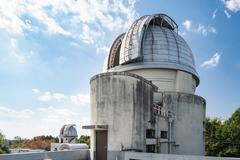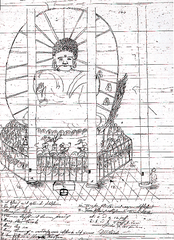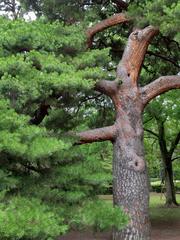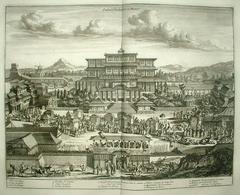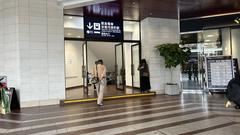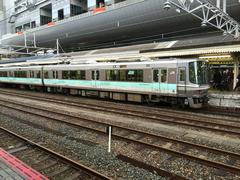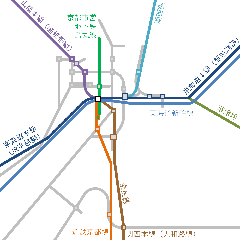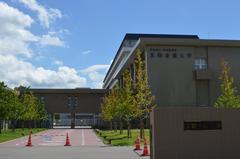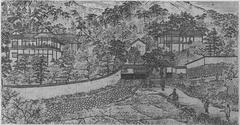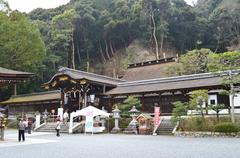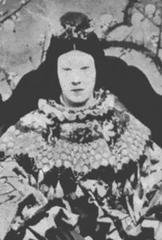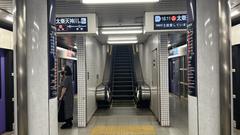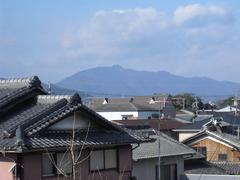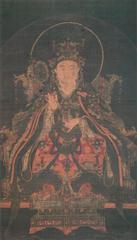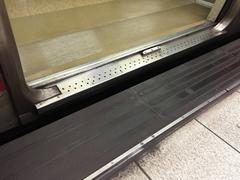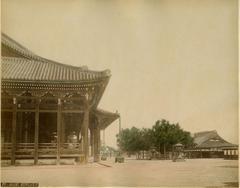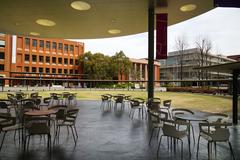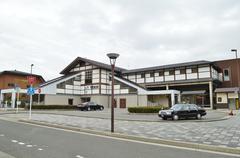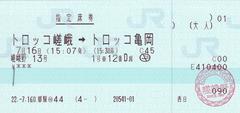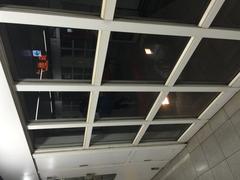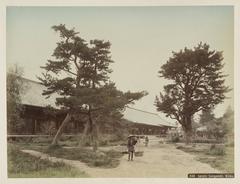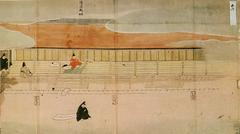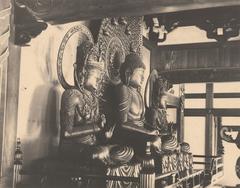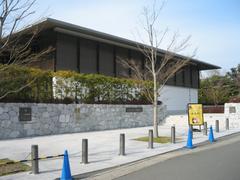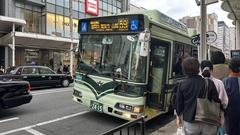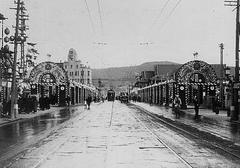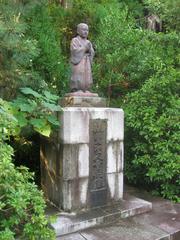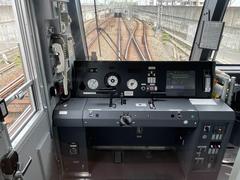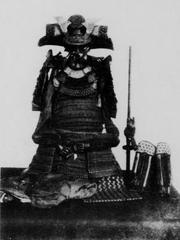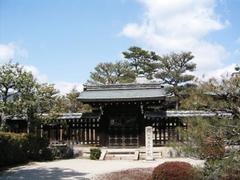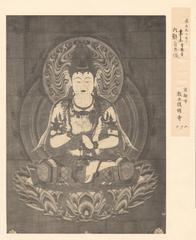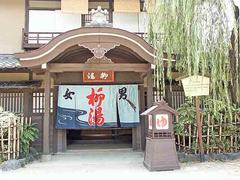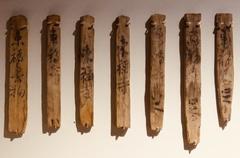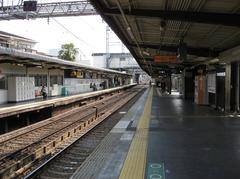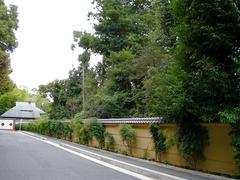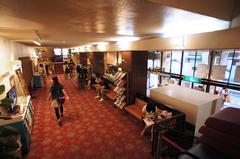Jingū-Marutamachi Station Kyoto: Visiting Hours, Tickets, and Travel Guide
Date: 03/07/2025
Introduction
Jingū-Marutamachi Station is a vital gateway to the cultural heart of Kyoto, located in the historic Sakyō-ku district along the picturesque Kamo River. As a modern underground station on the Keihan Ōtō Line, it offers direct access to some of Kyoto’s most iconic sites, including Heian Shrine, the Kyoto Imperial Palace, and the vibrant Okazaki Cultural District. Since its opening in 1989 and renaming in 2008 to honor the nearby Heian Jingū Shrine, Jingū-Marutamachi Station has balanced modern convenience with Kyoto’s deep-rooted heritage (Keihan Ōtō Line - Wikipedia; Heian Shrine - KyotoTravel.info).
Operating from approximately 5:30 AM to midnight, the station provides comprehensive ticketing options, multilingual signage, and a barrier-free environment for all travelers. Its strategic location makes it an essential starting point for exploring Kyoto’s eastern treasures and local neighborhoods (Japan Guide; Magical Trip).
Historical Background
Early Railway Development
Kyoto’s railway history dates to the early 20th century when electric railways began linking the city’s core with its suburbs. Keihan Electric Railway, a key operator in Kansai, played a critical role. In 1924, the predecessor of the Keifuku Electric Railway acquired a license to build local railways between Demachiyanagi and Sanjo, setting the stage for future developments (Keihan Ōtō Line - Wikipedia).
The Keihan Ōtō Line and Station Inception
After the closure of Kyoto City streetcars in 1978, Keihan Electric Railway spearheaded the development of a new transit corridor along the Kamo River’s east bank. Construction of the underground extension began in 1984, culminating in the opening of the Ōtō Line and Marutamachi Station (renamed Jingū-Marutamachi in 2008) on October 5, 1989. The station’s name change paid tribute to Heian Jingū Shrine and clarified its distinction from the similarly named Marutamachi Station on the subway (Keihan Ōtō Line - Wikipedia; Wikidata).
Visiting Jingū-Marutamachi Station
Station Location & Access
Jingū-Marutamachi Station lies beneath the intersection of Kawabata-dōri and Marutamachi-dōri in central Kyoto. Its proximity to the Kamo River, Okazaki Cultural District, and Heian Shrine makes it a prime access point for visitors. The station’s main entrance is on the east side of Kawabata-dōri, with secondary entrances providing access to nearby bus stops and riverside promenades.
Address: Kyoto, Japan
Coordinates: 35°1’7.197” N, 135°46’20.195” E
Visiting Hours & Ticketing
- Operating Hours: Daily from 5:30 AM to midnight.
- Ticketing: Automated machines accept cash and IC cards (ICOCA, Suica, PiTaPa). Fare adjustment machines are available.
- Passes: Day passes and regional options like the Kansai Thru Pass or Kyoto City Bus & Subway One-day Pass are accepted.
- Special Access: Only local, sub-express, and express trains stop here; rapid express and limited express trains do not.
Station Facilities & Accessibility
Layout
- B1 Level: Ticket gates, concourse, and amenities.
- B2 Level: Single island platform serving two tracks (eight-car capacity).
Accessibility Features
- Elevators linking ground, concourse, and platform levels
- Barrier-free multipurpose restrooms
- Braille maps, tactile paving, and audio guidance
- Multilingual signage (Japanese, English, Chinese, Korean)
- Emergency call buttons and CCTV surveillance
Passenger Services
- Electronic real-time timetables
- Tourist information panels and city maps
- Benches and seating areas
- Nearby bicycle parking and taxi stand
Connectivity and Transfers
- Bus Links: Nearby stops serve Kyoto City Bus (65, 93, 202, 204) and Kyoto Bus (15, 17, 41, 51, special 16, 17).
- Nearby Subway: Marutamachi Station (Karasuma Line) is about 1 km west—reachable by bus or a 10–15 minute walk.
- Eizan Electric Railway: Accessible via transfer at Demachiyanagi Station.
Exploring Kyoto from Jingū-Marutamachi Station
Heian Shrine and Okazaki Cultural District
A 10–15 minute walk east leads to Heian Shrine, famous for its grand torii and lush gardens. The Okazaki Cultural District features the Kyoto Municipal Museum of Art, National Museum of Modern Art, Kyoto Prefectural Library, and the Kyoto City Zoo. The area hosts major festivals, notably the Jidai Matsuri in October (Magical Trip).
Kyoto Imperial Palace & Kyoto Gyoen National Garden
A 10-minute walk west brings visitors to the Kyoto Imperial Palace and the expansive Kyoto Gyoen National Garden, open for free guided tours and seasonal flower viewing.
Kamo River Promenades
Steps from the station, the Kamo River offers scenic walking and cycling paths, ideal for cherry blossom viewing in spring and riverside dining in summer.
Other Nearby Highlights
- Teramachi & Kawaramachi Shopping Streets: Covered arcades for shopping, traditional crafts, and local dining.
- Gion District & Yasaka Shrine: Historic geisha quarter, accessible by a short train ride or walk.
- Shimogamo Shrine: UNESCO site in Tadasu no Mori forest, renowned for the Aoi Matsuri in May.
Seasonal Events & Local Experiences
Jingū-Marutamachi Station serves as a hub for Kyoto’s top seasonal festivals and experiences:
- Cherry Blossom Viewing: Ideal at Kamo River, Gyoen Park, and Heian Shrine gardens.
- Jidai Matsuri: October parade from the Imperial Palace to Heian Shrine.
- Gion Matsuri: July festival in the Gion District.
- Tea Ceremonies & Traditional Dining: Local tea houses and kaiseki restaurants offer immersive cultural encounters.
Practical Visitor Tips
- Peak Periods: Expect crowds during major festivals and school holidays; visit early or on weekdays for a quieter experience.
- Luggage: No large coin lockers at the station—plan accordingly.
- Payment: IC cards are widely accepted, but carrying cash is recommended.
- Accessibility: The station and most major attractions are wheelchair accessible.
- Photography: The Kamo River and Heian Shrine are excellent for photos.
Frequently Asked Questions (FAQ)
Q: What are the Jingū-Marutamachi Station opening hours?
A: Daily from approximately 5:30 AM to midnight.
Q: Where can I buy tickets?
A: At station vending machines (cash/IC card) or via the Keihan Railway app.
Q: Is the station accessible for travelers with disabilities?
A: Yes, with elevators, barrier-free restrooms, and tactile guidance.
Q: What notable attractions are nearby?
A: Heian Shrine, Okazaki Cultural District, Kyoto Imperial Palace, Kamo River, and Gion.
Q: How do I get to Gion or the Imperial Palace?
A: Both are within walking distance or a short transit ride from the station.
Summary Table: Key Attractions Near Jingū-Marutamachi Station
| Attraction | Distance | Features & Events |
|---|---|---|
| Heian-jingū Shrine | 10–15 min walk | Gardens, cultural festivals, grand torii |
| Kyoto Imperial Palace | 10 min walk | Historic palace, free guided tours |
| Kamo River | 2 min walk | Promenades, cherry blossoms, summer dining |
| Gion District/Yasaka Shrine | 20 min walk/short ride | Geisha quarter, Gion Matsuri festival |
| Shimogamo Shrine | 20 min walk/bus | UNESCO site, Aoi Matsuri festival |
| Okazaki Cultural District | 15 min walk | Museums, zoo, art galleries, Jidai Matsuri |
Conclusion
Jingū-Marutamachi Station stands as both a practical transit hub and a welcoming threshold to Kyoto’s storied east. Its accessible facilities, comprehensive ticketing, and central location give travelers seamless entry to Kyoto’s finest shrines, gardens, museums, and seasonal celebrations. For a smooth, enriching Kyoto adventure, plan ahead using this guide, leverage digital resources like the Audiala app, and check local event schedules.
Sources and Further Reading
- Keihan Ōtō Line - Wikipedia
- Heian Shrine - KyotoTravel.info
- Japan Guide - Heian Shrine
- Magical Trip - Kyoto List of Events & Festivals for 2025
- Keihan Electric Railway Official Site
- Kyoto Travel Guide
- Rome2Rio - Kyoto Station to Jingū-Marutamachi Station
- Wikidata
- Wikipedia (French)
- Japanese Wiki
- Japan Experience
- Travel Caffeine
- Heian-jingū Shrine Moments - Trip.com

